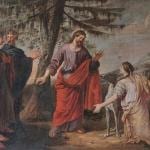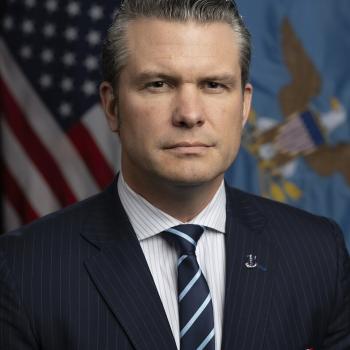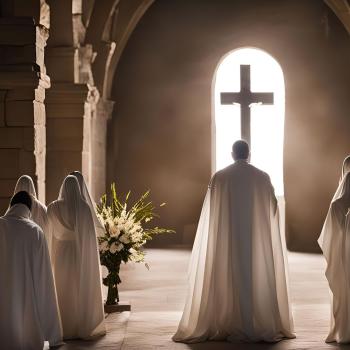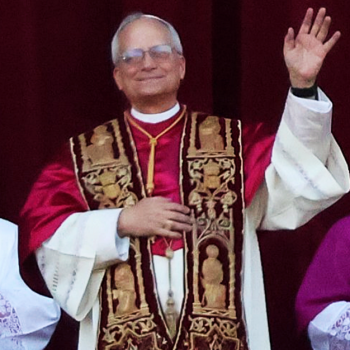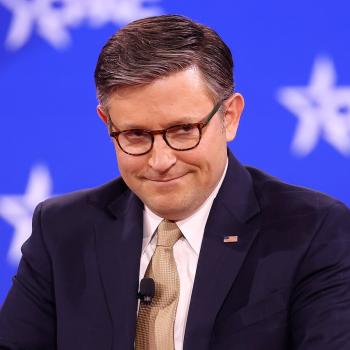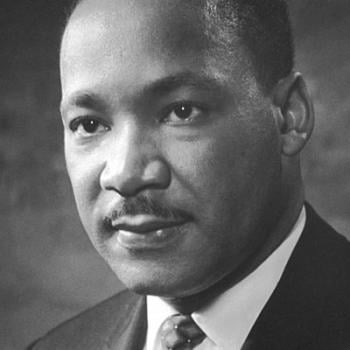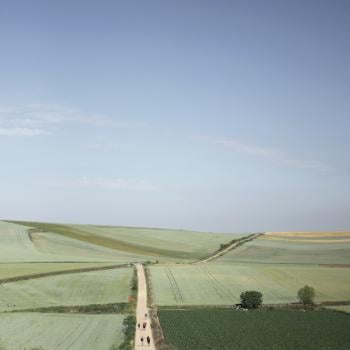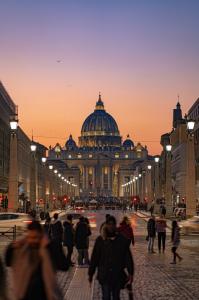
It’s becoming more common for conservative Catholics to criticize Vatican II. Most recently, Anthony Esolen has written a piece for Inside the Vatican calling for Catholics to ignore Vatican II and “move on.” Esolen refers to an earlier piece by Archbishop Vigano, also published in Inside the Vatican. Vigano, in turn, alludes to criticisms of Vatican II made by Khazakh bishop Athanasius Schneider published on the LifeSiteNews website. The three pieces have their differences. Schneider’s is by far the most thorough and coherent in its argument. Esolen’s is the most moderate. Vigano is the least coherent and also comes the closest to rejecting the Council outright. But all three agree that the “hermeneutic of continuity” promoted by Pope Benedict XVI and other mainstream conservative Catholics runs into problems rooted in the texts of Vatican II themselves and in the intentions of the Fathers of that Council.
Getting the Council right
The person who first seriously set out to convert me to Catholicism, a former Scott Hahn student named Tim Gray who is now a professor of Biblical studies at the seminary in Denver, presented this hermeneutic of continuity to me as the correct way to understand Vatican II. I was a first-year Ph.D. student at Duke studying church history, but very ignorant of modern Catholicism. Tim was doing a second master’s degree after having earned one at Steubenville. Tim was devout, intelligent, and very evangelistic. I was still very much under the influence of my Holiness background, and very wary of the possibility that Catholicism might turn into the One World Church of dispensationalist eschatology.
Catholicism as I was experiencing it in the Diocese of Raleigh in 1995 was very different from my medievalist dreams. It seemed to be a bland, timid, dumbed-down caricature of the religion of Aquinas and Dante and Chesterton and Tolkien and Flannery O’Connor. Tim explained that liberals had distorted the true meaning of Vatican II but that John Paul II was restoring what Vatican II was supposed to be. (I may be oversimplifying the message, but that was the central idea as I remember it.)
As I read ressourcement theologians such as Bouyer and De Lubac, I found this interpretation convincing. These theologians had a vision for the Catholic Church that I found utterly compelling. It was deeply patristic, deeply Biblical, and free from the legalism and authoritarianism that have so often beset Western Catholicism. And I was willing to believe that this was the trajectory the Catholic Church was on: one that would implement the true vision of the Council as found in the ressourcement theologians.
Ratzinger and the hermeneutic of continuity
In particular, I found Cardinal Ratzinger, eventually Pope Benedict XVI, to be the champion of this kind of “conservative ressourcement” theology. I found–and still find–him to be one of the most profound and richly orthodox theologians of our time. While I had my disagreements with some specific things he said or did, I rejected the claims that he was trying to “undo Vatican II.” I agreed, fundamentally, with his argument for a “hermeneutic of continuity.” He took Vatican II seriously as part of the Church’s Tradition, but not as a radical new beginning.
Over and over again, I found those who argued for discontinuity making what seemed to me profoundly silly arguments. There was the woman who explained to me at a Chrism Mass in 1999 that the Franciscan parish where the Mass was being held didn’t have kneelers because “Vatican II forbade kneeling.” There was the young priest who assured me that Gaudium et Spes contradicted Trent and got rid of the doctrine of original sin. (This was the same priest who said that Jesus wasn’t either fully human or fully divine to begin with, but grew into both.) Liberal Catholics seemed not to care about the nuances of either history or theology. They seemed to be following a shallow religion that was more about feel-good cliches than about careful thinking or deep spirituality.
Be careful what you ask for
Then I moved to northern Indiana in 2006, after a few years in New Jersey. This coincided, of course, with Pope Benedict’s pontificate. Now I was living in an area with a strong Catholic heritage. Down the road from me were two Catholic parishes with large, beautiful buildings. (There were two, a couple of blocks from each other, because the Irish in the 19th century had demanded a separate parish from the Germans.) Not far from my house, too, was the former Capuchin convent where Venerable Solanus Casey had lived for a time. (It was a Protestant church when I came to town, but while I was there the Protestants sold it back and it became a novice house for a very conservative order of Dominican sisters.) The headquarters of Our Sunday Visitor were in town as well. And finally, the town contained the mother house of the (quite liberal) missionary order “Our Lady of Victory Missionary Sisters.”
So that adds up to two parishes, two convents, and one of the leading Catholic periodicals in America, all in a small Indiana town of about 18,000 people. I had never lived in such a Catholic environment in my life. For someone with my longstanding attraction to Catholicism, it should have been paradise.
But it wasn’t. On the personal side, I was teaching for an evangelical college and had reason to think I would lose my job if I became Catholic. But more to the point here, living in that environment helped me understand the deep problems with traditional Catholicism in a way that nothing else really had.
Sundown town
For one thing, alongside its piety the town had a long history of racism. It had been a “sundown town” for decades, excluding all African-Americans after dark. During the 2012 presidential campaign, a local resident posted a sign outside his house saying “Get the Muslim monkey off my back.” And while all of this certainly wasn’t the fault of the Catholics exclusively, they had been part of the problem much of the time. (I think the person with the racist sign in 2012 was Catholic, but I’m not sure.)
In my own time there, I met the viciously anti-Jewish Catholic author E. Michael Jones, who was the guest of honor at an “Epiphany party” I attended at the home of a local Catholic laywoman who wrote sacred music and talked a lot about restoring the beauty of Catholic worship. (And yes, I was drawn in by those things, and while I argued with Jones vigorously, I went to the party knowing he was the guest of honor.)
My closest Catholic friends in that town were people who were deeply disillusioned with the Church and not in good standing, though they continued to see themselves as Catholic and to raise their children as Catholic. I’d run into plenty of disillusioned Catholics before, and I knew a lot, in theory, about the twisted forms Catholic culture can take. But this was the first time it was brought home to me.
I don’t want to make it sound as if my experience of Catholicism in this town was altogether bad. I knew many fine Catholics there. I liked the priests insofar as I got to know them. And there was something beautiful about being able to walk a few blocks and go to daily Mass or Adoration, and about the matter-of-fact reverence with which people practiced their faith. But the vibrant, counter-cultural, deeply orthodox and sacramental faith for which I yearned was only visible, much of the time, through a thick veil of cultural inertia. And at the same time, my acquaintance with Sister Roseanne made me realize that my youthful scorn for “liberal nuns” had been arrogant and misguided.
The Republican party at prayer?
At the same time, I was very involved in online discussion on Catholic forums, particularly the forum run by Catholic Answers. (My alias was “Contarini” in case anyone wants to read some of my posts on that forum.) Later on, I became more involved in Facebook and eventually stopped posting on the CA forums. All these discussions cemented both my sense that I would never really be content as a Protestant and my growing discomfort with what conservative Catholicism was turning into. Mark Shea, whom I had always regarded as one of the finest of the popular apologists, was alienating more and more of the self-professed orthodox not by any doctrinal heresy but by his insistence on defending Catholic moral teaching where that teaching fit uneasily with right-wing Republican sensibilities. More and more, it seemed to me that American Catholicism under Pope Benedict was turning into a spiritual justification for conservative Republican politics and had just as little genuinely counter-cultural power as Episcopalianism.
In the end, three years after moving from Indiana to Kentucky, I did become Catholic. (The election of Pope Francis helped, even though I remain a deep admirer of Pope Benedict as a theologian and think he has been unfairly denigrated as Pope, and often served very poorly by his loudest admirers.) But by that time I had a much more complicated picture of Catholicism than I had had when Tim first ignited my desire to convert. I no longer thought of the conservative, “hermeneutic of continuity” wing of Catholicism as automatically the good guys. I realized that continuity could sometimes mean continuing things that were unhealthy.
The paradoxes of continuity
I now see continuity and discontinuity, like so many things, in terms of Barfield’s concept of polarity. They are opposites that depend on one another, in Catholicism as in other aspects of life.
And so I think Archbishop Vigano and his fellow critics of Vatican II have a point. There is something unconvincing about the effort many Catholics have put into proving that Vatican II really didn’t change anything much and that the progressives are just misinterpreting it. Obviously I disagree with them that this makes Vatican II something that needs to be “ignored” or rejected. It does no doubt need to be “corrected” in the sense that its interpretations of the Tradition will themselves, eventually, be reinterpreted. But no more so than any other Council.
So it’s not that I reject the “hermeneutic of continuity” entirely. If it means that Vatican II is just one among many Councils, not some unique work of the Spirit that nullifies what went before, I remain entirely committed to continuity. But every Council has its particular charism. And the charism of Vatican II was to wake up a Church that had too often rested smugly on its laurels, confident that it had a well-constructed, well-armored, perennial system to offer to the confused modern world. Much that is silly and sometimes profoundly harmful has resulted from the cracks that Vatican II opened in the armor of the Church Militant. But much of that armor was not, in fact, the armor of God, but rather like the armor Saul gave to David, burdening the Church down rather than protecting it.
The Church of 2020 is an obviously weakened and wounded Church in a way that the Church of 1960 was not. It is not, for that reason, necessarily a less apt instrument of the Spirit. In fact, we have the assurance of the Apostle Paul that it often works the other way round.
Image by Alberico Bartoccini, from https://unsplash.com/



